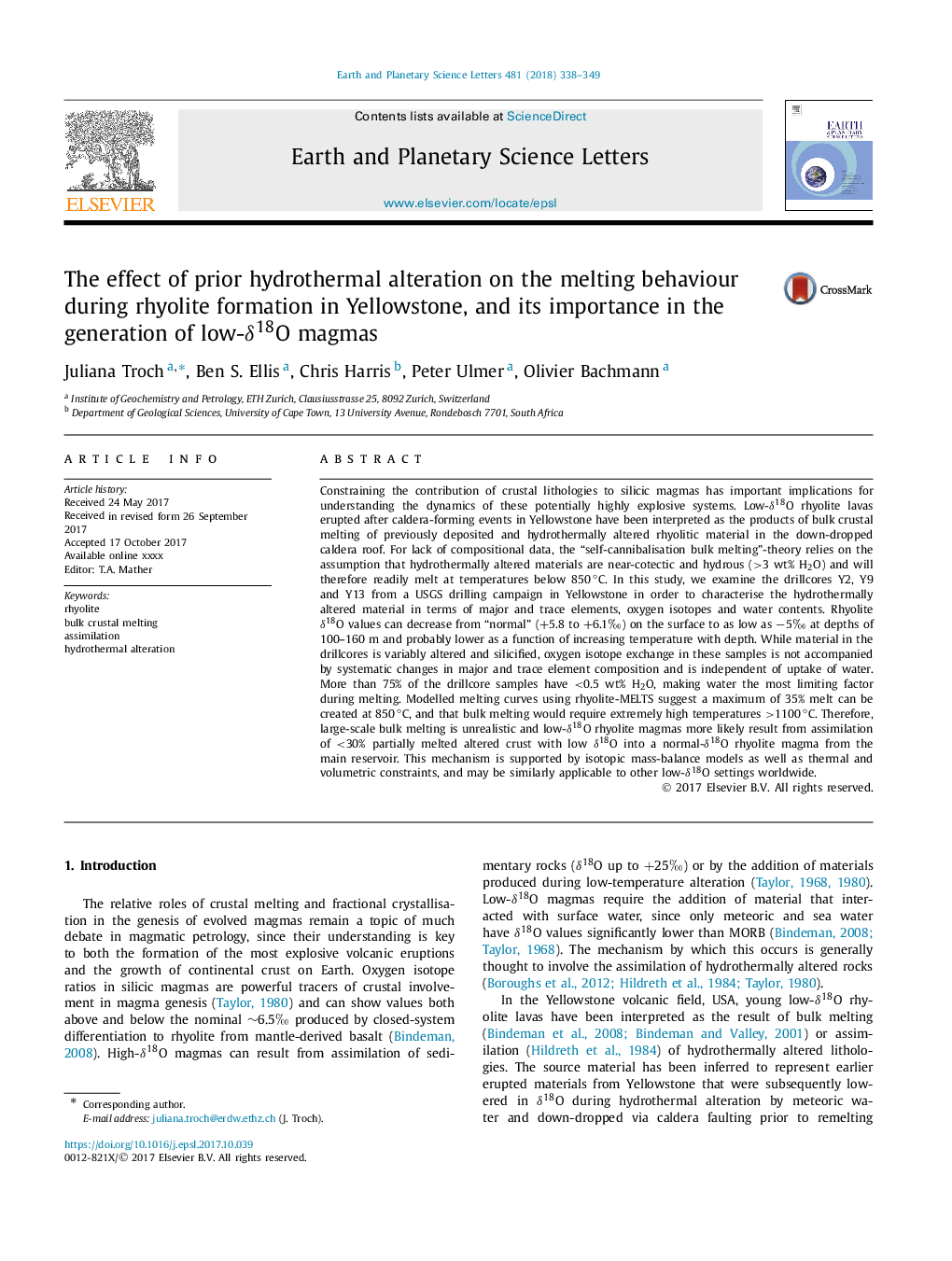| کد مقاله | کد نشریه | سال انتشار | مقاله انگلیسی | نسخه تمام متن |
|---|---|---|---|---|
| 8907367 | 1634675 | 2018 | 12 صفحه PDF | دانلود رایگان |
عنوان انگلیسی مقاله ISI
The effect of prior hydrothermal alteration on the melting behaviour during rhyolite formation in Yellowstone, and its importance in the generation of low-δ18O magmas
دانلود مقاله + سفارش ترجمه
دانلود مقاله ISI انگلیسی
رایگان برای ایرانیان
کلمات کلیدی
موضوعات مرتبط
مهندسی و علوم پایه
علوم زمین و سیارات
علوم زمین و سیاره ای (عمومی)
پیش نمایش صفحه اول مقاله

چکیده انگلیسی
Constraining the contribution of crustal lithologies to silicic magmas has important implications for understanding the dynamics of these potentially highly explosive systems. Low-δ18O rhyolite lavas erupted after caldera-forming events in Yellowstone have been interpreted as the products of bulk crustal melting of previously deposited and hydrothermally altered rhyolitic material in the down-dropped caldera roof. For lack of compositional data, the “self-cannibalisation bulk melting”-theory relies on the assumption that hydrothermally altered materials are near-cotectic and hydrous (>3 wt% H2O) and will therefore readily melt at temperatures below 850â°C. In this study, we examine the drillcores Y2, Y9 and Y13 from a USGS drilling campaign in Yellowstone in order to characterise the hydrothermally altered material in terms of major and trace elements, oxygen isotopes and water contents. Rhyolite δ18O values can decrease from “normal” (+5.8 to +6.1â°) on the surface to as low as â5â° at depths of 100-160 m and probably lower as a function of increasing temperature with depth. While material in the drillcores is variably altered and silicified, oxygen isotope exchange in these samples is not accompanied by systematic changes in major and trace element composition and is independent of uptake of water. More than 75% of the drillcore samples have <0.5 wt% H2O, making water the most limiting factor during melting. Modelled melting curves using rhyolite-MELTS suggest a maximum of 35% melt can be created at 850â°C, and that bulk melting would require extremely high temperatures >1100â°C. Therefore, large-scale bulk melting is unrealistic and low-δ18O rhyolite magmas more likely result from assimilation of <30% partially melted altered crust with low δ18O into a normal-δ18O rhyolite magma from the main reservoir. This mechanism is supported by isotopic mass-balance models as well as thermal and volumetric constraints, and may be similarly applicable to other low-δ18O settings worldwide.
ناشر
Database: Elsevier - ScienceDirect (ساینس دایرکت)
Journal: Earth and Planetary Science Letters - Volume 481, 1 January 2018, Pages 338-349
Journal: Earth and Planetary Science Letters - Volume 481, 1 January 2018, Pages 338-349
نویسندگان
Juliana Troch, Ben S. Ellis, Chris Harris, Peter Ulmer, Olivier Bachmann,